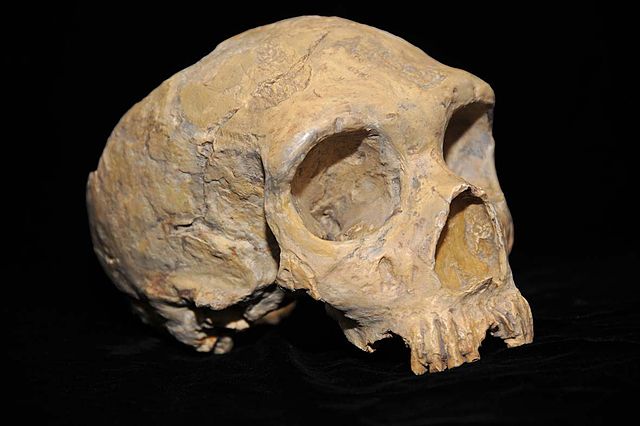
An article published in the journal “Proceedings of the National Academy of Sciences” reports a genetic analysis of the remains of two Neanderthals discovered in Gibraltar in 1848 and 1926. A team of researchers coordinated by the National Museum of History in London and the Max Planck Institute for Evolutionary Anthropology (MPI-EVA) in Leipzig carried out the extraction of DNA from the remains of those two individuals, succeeding in establishing that the skull discovered in 1848 in the Forbes’ Quarry site belonged to a female while the one discovered in 1926 and nicknamed Devil’s Tower Child was a male. The female was more closely related to the Neanderthals who lived in Europe between 60,000 and 120,000 years ago than to those who lived in Spain 49,000 years ago.
The two skulls discovered in Gibraltar in 1848 and 1926 were considered special because for a long time Gibraltar was considered a sort of last refuge for the Neanderthals. This idea came from still limited knowledge that indicated that the species became extinct about 35,000 years ago, before other studies suggested their survival for a few thousand more years.
Paleogenetics, a specialization concerning the DNA of ancient, even extinct, organisms, is helping to reconstruct relationships and interbreedings among various species of hominins but also migrations of species such as the Neanderthals. The problem was that the two skulls discovered in Gibraltar were discovered in a warm area, where DNA degrades more easily than in colder areas, and over time got contaminated by DNA from people who handled them without the precautions taken by today’s paleontologists. Lukas Bokelmann and his colleagues at the MPI-EVA used a preparation method that reduces contamination before sequencing.
The examinations were conducted on some very small samples of the two skulls: these are destructive examinations, therefore the samples must be selected with great care and in this case they’re 20 milligrams of bone powder from the Forbes’ Quarry skull (photo ©AquilaGib) and 36 milligrams of bone powder from the skull of the Devil’s Tower Child (photo ©Guérin Nicolas).
The results provided some confirmation and some surprises. They confirmed that the Forbes’ Quarry adult was a female while the Devil’s Tower Child was a boy. The DNA of the female recovered by the researchers allowed a comparison with that of other Neanderthals establishing that she’s genetically closer to the Neanderthals that inhabited Europe between 60,000 and 120,000 years ago than to those who lived in Spain 49,000 years ago. In essence, Gibraltar was considered one of the last Neanderthal refugia but the ones who lived in Forbes’ Quarry seem to date back to a period far earlier than those hominins’ extinction.
The improvement of techniques that reduce the contamination of fossils that still contain DNA can lead to progress in the sequencing of the various hominins’ genome. This research offered new information on the Gibraltar Neanderthals, an addition to those existing on this species with new perspectives to identify other remains discovering relationships and various interbreedings.


